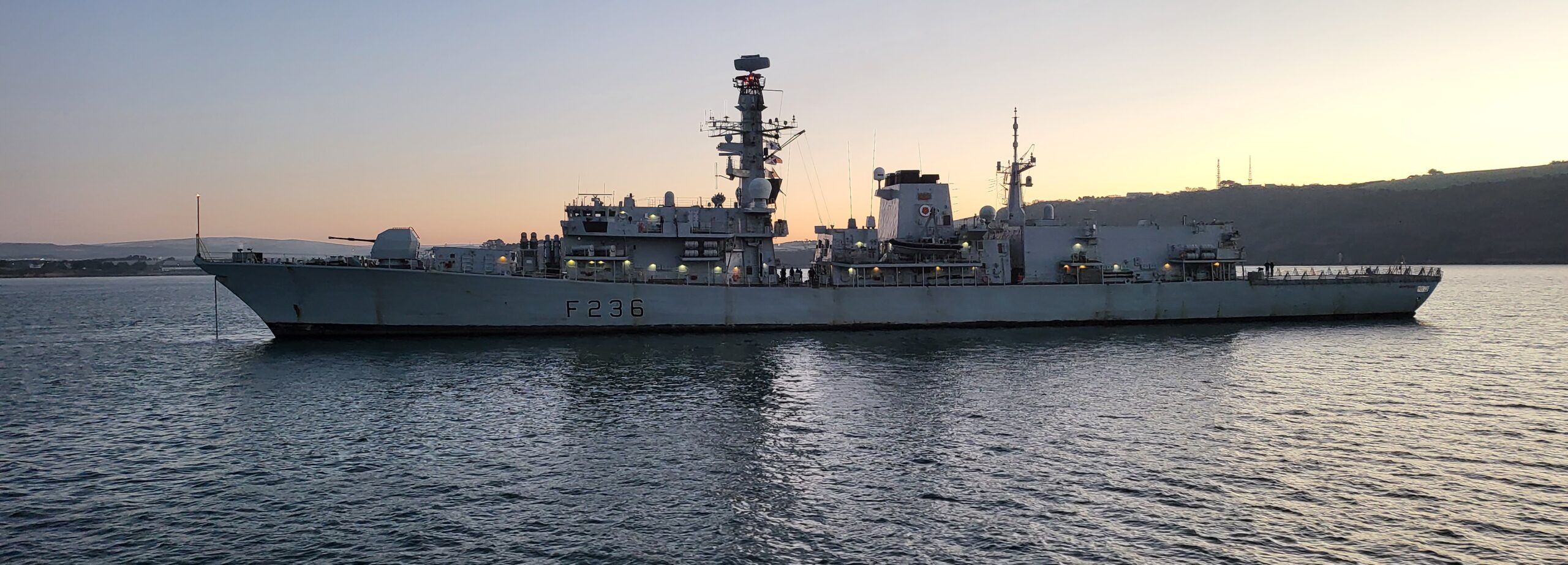CAVALRY ON THE HORIZON, BUT WITH MANY DIFFERENT HORSES
Dear Readers,
Welcome to the first Bunker Briefing of 2023.
Expert observers of the war in Ukraine expect that the Russian Army will mount a new offensive as soon as conditions are right – including bringing up forces to jumping off points as they did to begin the war. Any such concentrations are likely to be detected by satellites, as happened prior to the invasion in February 2022, allowing Ukraine’s forces to prepare to meet the new threat.
It is Ukraine’s intention not just to halt any new Russian advance, but eventually to force Russian forces to leave all of the land they have captured to date in eastern Ukraine.
To do this, Ukraine’s President Volodymyr Zelenskyy has been asking those nations supporting his forces to contribute even more weapons, particularly heavy armour.
Germany, followed closely be the United States, have now leaped together to commit to deliveries of heavy armour to the Ukrainian Army, perhaps spurred on by the initial declaration by the UK government that it would send 14 of its Challenger 2 tanks, a move designed to encourage other nations to do likewise.
US President Joe Biden said that 31 M1 Abrams main battle tanks would be sent, together with eight tactical vehicles to recover equipment; other support vehicles; and funding for training, maintenance, and sustainment in a package worth over $400 million.
German Chancellor Olaf Scholz committed to sending 14 of its Leopard 2A6 tanks, but this act was also meant as a trigger for other Leopard operating countries to add to the number of tanks being send to Ukraine. Canada quickly committed four of its 80 Leopards 2A4, and other Leopard operating nations that might be expected to follow this example include Poland, Spain, Finland, the Netherlands and Norway.

There are several concerns however, not least among them of when these tanks will arrive. Not only that, but Ukrainian Army personnel will have to be trained not only to fight, but also maintain all three types, which will take time. It is expected that eventually the largest contingent of tanks will be Leopards, although even here there could be substantial differences between different versions for the 2A4 to the 2A6.
Abrams tanks are said to be more difficult to maintain than the Leopard or Ukraine’s stock of Russian tanks, and the Abrams is powered by turbine engines which consume jet fuel, unlike the V12 diesel engines of the Leopards and Challengers. So the Ukraine Army is likely to end up with specific fleets of different armoured vehicles, all with various supply needs from spare parts to ammunition. The logistics behind managing all of these armoured vehicles, not to mention a broad range of other types of vehicles being sent, will be a serious challenge.
Also, President Zelenskyy was talking of his country’s need for 300-600 tanks to help push the Russian’s out of Ukraine. Although those being donated are superior to many Russian tanks, at present optimistic levels the donations will amount to just over 100 at most.
Best,
Andrew Drwiega
PS. I have invited Dr. Lee Willett to be a regular contributor to this newsletter, bringing perspectives on naval deployments and developments.
THOUGHT FOR THE WEEK
“In a man-to-man fight, the winner is he who has one more round in his magazine.”
― Erwin Rommel”
HMS MONTROSE PROVES UK ROYAL NAVY FORWARD DEPLOYMENT CONCEPT

Dr. Lee Willett – The UK Royal Navy (RN) Type 23 frigate HMS Montrose returned to HM Naval Base Devonport, Plymouth on 16 December, concluding a three-year deployment to the Gulf region that led – and proved – the RN’s emerging concept for forward-deployed operations.
HMS Montrose arrived in the Gulf in April 2019. In November 2022, HMS Lancaster relieved HMS Montrose. The handover to a second ship underlined the success of Montrose’s time as the forward-deployed frigate and of the RN’s forward-deployed concept of operations (CONOPS).
At a strategic level, forward deployment is a core foundation of the RN’s contribution to meeting growing UK requirements for global presence.
At an operational level, the RN had identified a need to increase surface ship availability from 60 percent to 80 percent: the forward-deployment concept had been established to help meet this target. For HMS Montrose, using a dual-crewing concept (‘Port’ and ‘Starboard’ crews) and having capacity to conduct maintenance at different facilities across the Gulf region meant the ship was on operations for 1,300 days of the more than 1,500 days it was overseas.
HMS Montrose’s tour was the RN’s forward-deployment ‘pilot project’. Its success has been demonstrated not only in HMS Lancaster handing over but in the fact that, in September 2021, the Batch 2 River-class offshore patrol vessels (OPVs) HM Ships Spey and Tamar were sent further east, being forward deployed to the Indo-Pacific region.
The frigate and OPV deployments are informing on-going RN development of future forward deployment CONOPS, Rear Admiral Steve Moorhouse – the RN’s Director Force Generation – told a media briefing onboard HMS Montrose, as the ship sailed into Devonport. “How you support those ships at range from the UK, the lessons are huge and really important as we persist with forward engagement and look to thicken how we do that,” he said.
In maintenance terms, lessons have included ensuring that as much upkeep and upgrade work is done in the UK before a ship deploys, and then having a selection of support arrangements in place in-theatre to provide maintenance capacity as, when, and where needed, Rear Adm Moorhouse explained. Such lessons will be crucial for the UK’s Type 31 frigates, which will begin entering service from the mid-2020s and will pick up the frigate forward-deployment baton from the Type 23s.
In operational terms, the statistics underline the benefits of sustaining a ship on station, without losing time with rotational transits home. According to an RN statement, in its three years in the Gulf region HMS Montrose seized 16 tonnes of narcotics across 10 separate drugs busts, escorted more than 130 merchant ships through key choke points, and – in what the statement referred to as “The first bust of its kind by the RN in the region” – seized shipments of surface-to-air missiles and cruise missile engines.
HMS Montrose’s operational achievements demonstrate the range of threats enduring in the region. The forward-deployed frigate programme is, however, providing the UK with an opportunity to adapt how it deals with such threats. “Part of that evolution for us is starting to look at remotely piloted air systems (RPAS),” Commander Claire Thompson, Commanding Officer of HMS Montrose’s ‘Starboard’ crew, told the media briefing. “It’s only natural, as the RN looks towards uncrewed vehicles – be they air, surface, or sub-surface – that we’re part of that.”
HMS Montrose and HMS Lancaster have both been working to develop a deployed unmanned aerial system capability, using the AeroVironment Puma RPAS. Before sailing to the Gulf, HMS Lancaster tested Puma at the NATO/Portuguese Navy ‘REPMUS’/‘Dynamic Messenger’ unmanned systems experimentation exercises off Portugal in September. HMS Montrose then took the capability into theatre to develop tactics against operational tasks, Cdr Thompson explained.
US MAJOR ARMS SALES (Defence Security Cooperation Agency – DSCA).
28 December – Taiwan VOLCANO SYSTEM
The State Department has approved a possible Foreign Military Sale to the Taipei Economic and Cultural Representative Office in the United States of Volcano (vehicle-launched) anti-tank munition-laying systems and related equipment for an estimated cost of $180 million.
6 December – Taiwan AIRCRAFT STANDARD SPARE PARTS
The State Department has approved a possible Foreign Military Sale to the Taipei Economic and Cultural Representative Office in the United States of the expansion of the Cooperative Logistics Supply Support Arrangement for stock replenishment supply of aircraft standard spare parts and related equipment for an estimated cost of $330 million.
Also on the same day
6 December – Taiwan AIRCRAFT NON-STANDARD SPARE PARTS
The State Department has approved a possible Foreign Military Sale to the Taipei Economic and Cultural Representative Office in the United States of the expansion of the Cooperative Logistics Supply Support Arrangement for stock replenishment supply of aircraft non-standard spare parts and related equipment for an estimated cost of $98 million.
6 December – Poland – M1A1 ABRAMS MAIN BATTLE TANKS
The State Department has approved a possible Foreign Military Sale to the Government of Poland of M1A1 Abrams Main Battle Tanks and related equipment for an estimated cost of $3.75 billion.
6 December – Korea – CH-47F CHINOOK HELICOPTERS
The State Department has approved a possible Foreign Military Sale to the Republic of Korea of CH-47F helicopters and related equipment for an estimated cost of $1.5 billion.
UPCOMING EVENTS
IDEX & NAVDEX (30 Years)
20 – 24 February
Abu Dhabi National Exhibition Centre ADNEC, Abu Dhabi, UAE
AVALON
Australian International Airshow and Aerospace & Defence Exposition
28 February – 5 March
Avalon Airport, Geelong, Victoria, Australia
DSEI JAPAN
Australian International Airshow and Aerospace & Defence Exposition
15-17 March 2023
Makuhari Messe, Tokyo, Japan
Thanks for reading,
Andrew Drwiega
Editor-in-Chief
Armada International / Asian Military Review





















Discussion about this post